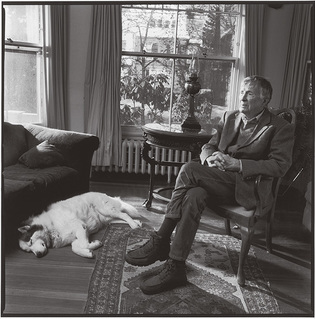 loading
loading
features“In awe of the power and beauty”Vincent J. Scully, Jr. 1920–2017  Mary Ellen MarkView full imageVincent J. Scully Jr. ’40, ’49PhD, the man once described by architect Philip Johnson as “the most influential architecture teacher ever,” passed away on November 30 at the age of 97. He died at his home in Lynchburg, Virginia. Professor Scully, who taught at Yale from 1947 through 2009, was beloved by generations of students; they filled Yale’s largest halls, at the Yale Art Gallery and the Law School, to hear him deliver his legendary art history lectures. He received a standing ovation at the end of every semester. “Because of Vince, generations of Yale students have learned not just to look, but to see,” Yale president Peter Salovey ’86PhD said in a statement released after Scully’s death. Scully wrote more than a dozen books and won many awards, including the National Medal of Arts. At Yale, he was a Sterling Professor, the highest faculty honor. A native of New Haven who entered Yale at the age of 16, Scully served in the US Army and the Marines during World War II, and then returned to Yale for his PhD. He was the master of Morse College from 1969 to 1975. Over the years, Scully became a leader in architectural preservation, intent on communicating the importance of our architectural legacy and the role that architecture can play. Scully is survived by his wife, Catherine Lynn ’81PhD, and four children, five grandchildren, and one great-grandchild. Yale has established a Vincent J. Scully Jr. Memorial Fund. For more information, call 800-395-7646 or 203-432-5436. Remembranceby Maya Lin ’81, ’86MArch Vince was one of my most influential professors and a great and generous teacher. Like so many students, I was enthralled by how Vince would take us from Teotihuacan to Monticello to the early skyscrapers of New York City—all in a one-hour lecture—and leave us in awe of the power and beauty of some of these great works. I for one owe Vince a great debt. It was in my senior year, in my very last seminar, that he so movingly described a World War I Memorial to the Missing in Thiepval, France, designed by Sir Edwin Lutyens. Listening to his description of that work, I found that a certain project of mine then underway was similar. Both described a journey to an awareness about loss: although the two designs could not have been more different formally, they evoked a similar psychological effect. I started madly writing the required description of the design I had made for the Vietnam Memorial—which I was about to enter into the competition, and which I am convinced won because of what I wrote, while still sitting in Vince’s class, about the psychological effect it would have on people. He inspired us to think about the humanity within architecture—and how the built environment influences who we are, both as individuals and as a society. He believed that architecture can elevate the spirit and can inspire us to help shape our world for the better. He made you feel architecture as a living and breathing presence. For those of us fortunate to have pursued the arts and architecture, his was a voice that impressed upon us the deep responsibility we each would have in making our own works. And for so many others, he inspired a sense of wonder, respect, and responsibility for the built environment. He has been such a great influence on so many of us. The world has lost one of its great teachers, and I will sorely miss him.
The comment period has expired.
|
|